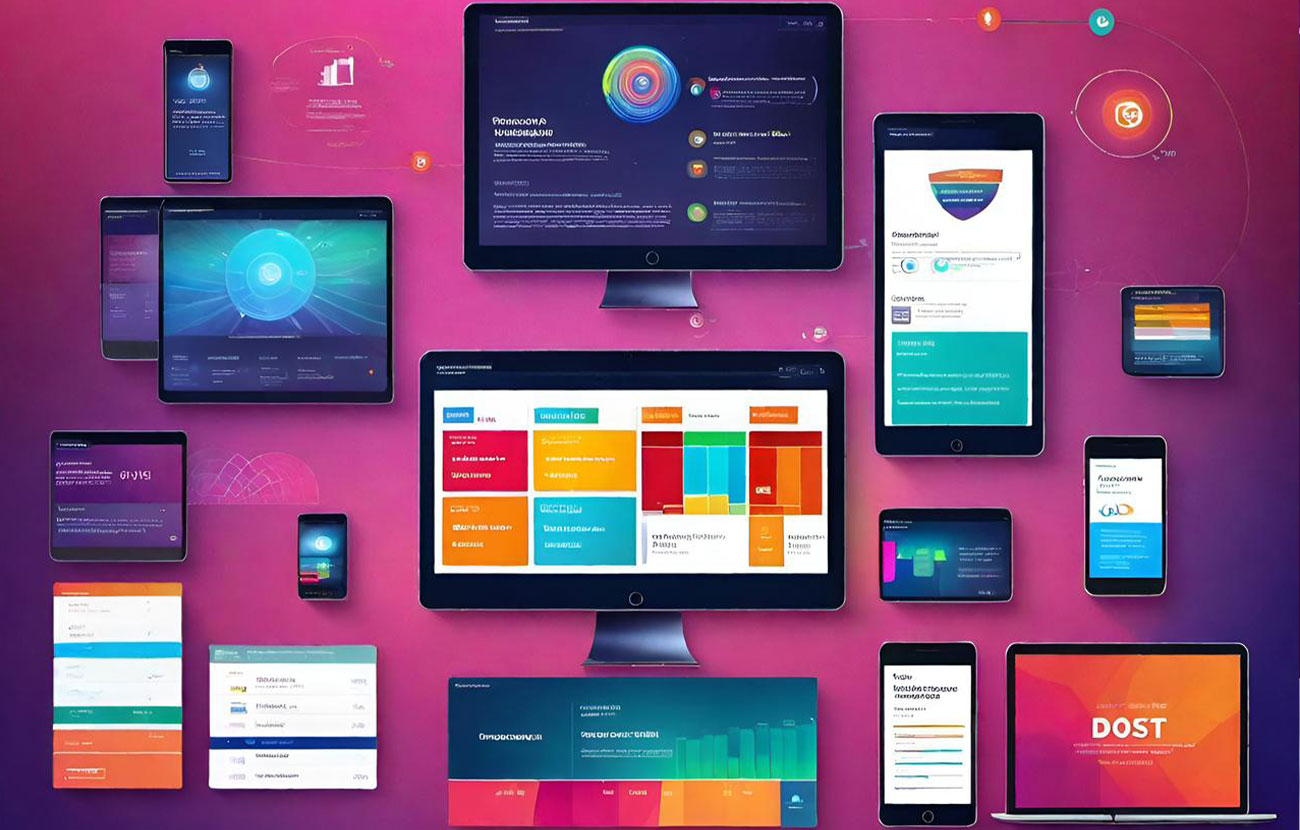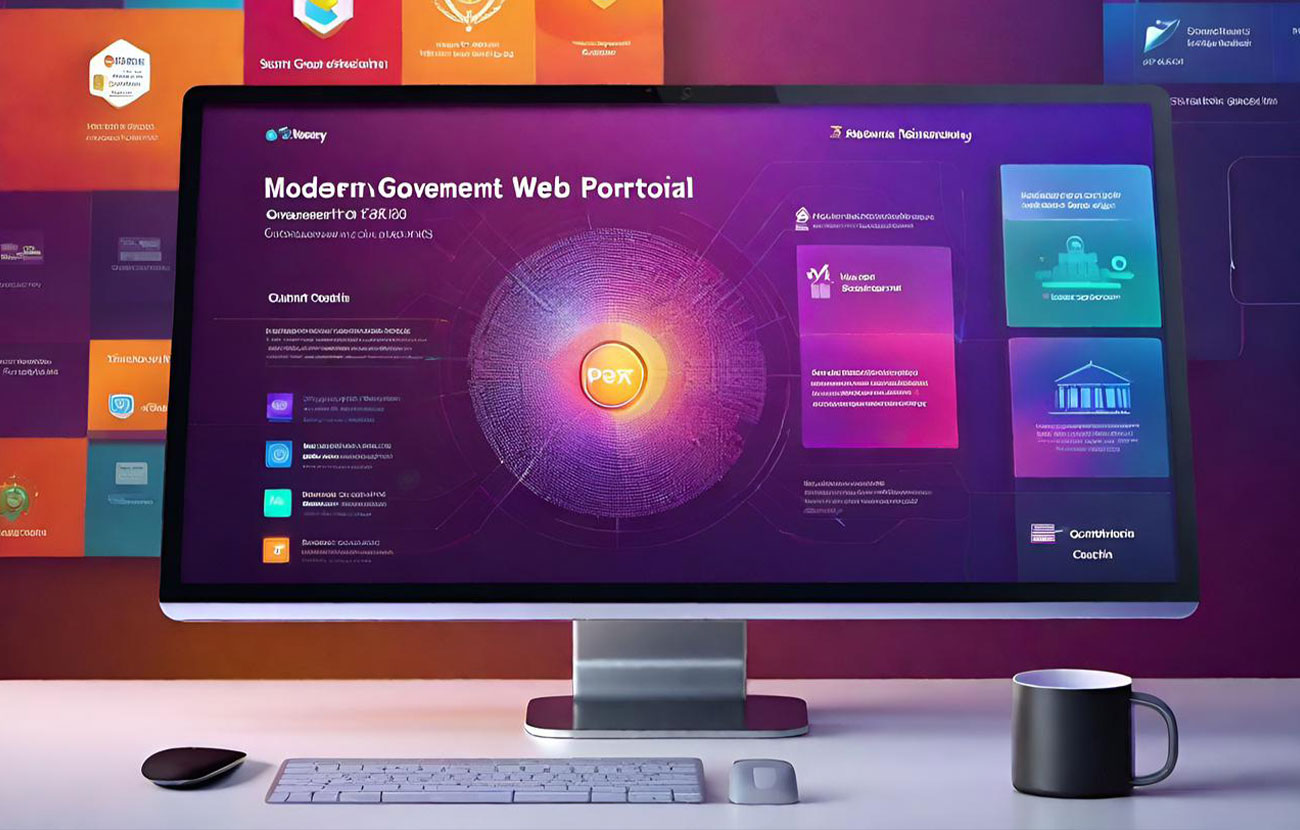What Is Third Party Cybersecurity Risk Management?

In today’s hyperconnected world, your security extends beyond your own walls. Third-party cyber risks lurk, threatening data breaches and operational disruptions. Third-party cybersecurity risk management offers a shield, guiding you to identify, assess, and mitigate these threats for a holistic defense. Dive in to understand this crucial practice and secure your digital ecosystem.
 Foundations of Third-Party
Foundations of Third-Party
Cybersecurity Risk Management
A. Key TPRM Framework Components:
- Governance and Policy:
- Define clear roles and responsibilities within your organization for each stage of TPRM, from risk assessment to incident response.
- Establish security policies that set expectations for third-party access, data handling, and reporting requirements.
- Implement a risk management framework aligned with industry best practices and relevant regulations.
- Risk Assessment and Identification:
- Employ a risk scoring system that considers various factors, including:
- Third-party industry and size: Different industries have varying inherent risks. Smaller companies may have less mature security programs.
- Security practices: Evaluate their security controls, incident response plans, and vulnerability management processes.
- Regulatory compliance: Assess their adherence to relevant data privacy and security regulations.
- Data access level: Understand the types of data they access and store, and its sensitivity.
- Financial stability: A struggling vendor may prioritize cost-cutting over cybersecurity.
- Prioritize critical third parties based on their risk score and potential impact on your organization.
- Employ a risk scoring system that considers various factors, including:
- Due Diligence and Onboarding:
- Conduct a thorough security questionnaire to gather information about their security posture and policies.
- Request evidence of security certifications and compliance audits.
- Perform vulnerability assessments or penetration testing to identify potential weaknesses in their systems.
- Negotiate security clauses in contracts that mandate specific controls, reporting requirements, and breach notification procedures.
- Establish a clear onboarding process that includes security training and access control protocols.
- Security Contractual Clauses:
- Include clauses that cover:
- Data security obligations: Specify data security controls, encryption requirements, and access restrictions.
- Incident reporting and response: Define communication protocols and timelines for reporting security incidents.
- Subcontracting limitations: Control who they can partner with and ensure subcontractors meet your security standards.
- Right to audit: Reserve the right to conduct security audits of their systems and processes.
- Termination clauses: Allow termination of the contract if they fail to meet security requirements.
- Include clauses that cover:
- Continuous Monitoring and Oversight:
- Conduct regular security audits and penetration testing of their systems and infrastructure.
- Monitor their security incident reports and vulnerability disclosures.
- Review their security certifications and compliance status periodically.
- Utilize vendor risk management platforms to automate monitoring and track their security performance.
- Incident Response and Remediation:
- Develop a comprehensive incident response plan that includes procedures for handling security incidents involving third parties.
- Establish clear communication channels with the third party for incident notification and escalation.
- Define roles and responsibilities for containment, eradication, and recovery activities.
- Conduct post-incident reviews to identify root causes and implement corrective actions.
- Training and Awareness:
- Provide security awareness training to employees on interacting securely with third parties and identifying potential risks.
- Train employees on your TPRM policies and procedures, including reporting suspicious activity or third-party security concerns.
- Foster a culture of security awareness and vigilance throughout your organization.
B. Risk Assessment Methodologies:
- Qualitative Methodology:
- Relies on expert judgment and qualitative assessments of risk factors.
- More subjective and suitable for initial screening or smaller organizations.
- Quantitative Methodology:
- Employs data and metrics to calculate risk scores based on predetermined formulas.
- More objective and precise, but requires detailed data and can be complex to implement.
- Hybrid Methodology:
- Combines qualitative and quantitative approaches for a balanced assessment.
- Often preferred for its flexibility and adaptability to different scenarios.
C. Utilizing Technology for TPRM:
- Automated Risk Assessment Tools:
- Streamline the assessment process by pre-populating questionnaires and scoring risks based on defined criteria.
- Provide consistent and objective assessments across various vendors.
- Vendor Risk Management Platforms:
- Centralize vendor data, risk assessments, and monitoring activities in a single platform.
- Automate tasks, simplify workflows, and improve reporting and analysis capabilities.
- Threat Intelligence Feeds:
- Provide real-time insights into emerging threats and vulnerabilities affecting specific industries or vendors.
- Proactively identify and mitigate potential risks associated with your third parties.
By employing these comprehensive components and leveraging technology effectively, you can establish a robust TPRM framework that protects your organization from the ever-evolving landscape of third-party cybersecurity risks.
 Implementing Effective TPRM
Implementing Effective TPRM
A. Tailoring TPRM to Your Organization:
- Industry Considerations: Different industries have varying risk profiles and regulatory landscapes. Healthcare organizations, for example, dealing with sensitive patient data, may require stricter TPRM measures than a retail company. Tailor your TPRM approach to the specific threats and regulations relevant to your industry.
- Organizational Size and Complexity: Smaller organizations may opt for a streamlined TPRM approach with standardized risk assessments and monitoring procedures. Larger organizations with complex supply chains might require a more granular approach, segmenting vendors based on criticality and employing risk-based monitoring models.
- Risk Tolerance: Your organization’s risk tolerance sets the boundaries for TPRM activities. High-risk industries or organizations with strict compliance requirements may prioritize comprehensive due diligence and continuous monitoring. Organizations with lower risk tolerance may focus on essential security controls and periodic assessments.
- Regulatory Landscape: Comply with relevant data privacy regulations, industry standards, and security frameworks that govern your organization and its third-party interactions. Adapt your TPRM practices to meet these requirements, such as adhering to GDPR data protection principles or implementing NIST cybersecurity controls.
Examples of Tailoring:
- Scaling Risk Assessments: Conduct in-depth assessments for high-risk vendors with critical data access, while applying a lighter-touch approach to low-risk vendors with minimal interaction.
- Adjusting Monitoring Intensity: Continuously monitor high-risk vendors through penetration testing and vulnerability scans, while implementing periodic security questionnaires and audits for low-risk vendors.
- Customizing Contractual Clauses: Tailor security clauses in contracts based on the vendor’s size, industry, and risk profile. Include specific requirements for data encryption, access controls, incident reporting, and disaster recovery plans.
B. Building a Culture of Third-Party Cybersecurity:
- Shared Responsibility: Promote a shared understanding that both your organization and third parties are responsible for maintaining good cyber hygiene. Communicate security expectations clearly and hold both parties accountable for compliance.
- Transparent Communication: Foster open communication and collaboration on security matters. Regularly share threat intelligence, security updates, and incident reports with third parties. Establish clear channels for reporting vulnerabilities and security concerns.
- Continuous Improvement: Encourage continuous improvement through regular security awareness training for both your employees and third-party personnel. Share best practices, conduct joint security exercises, and provide ongoing feedback on security performance.
C. Best Practices for Successful TPRM:
- Executive Buy-in: Secure strong commitment and resource allocation from leadership to ensure the success of your TPRM program. Highlight the benefits of TPRM in mitigating risks, protecting sensitive data, and ensuring compliance.
- Defined Roles and Responsibilities: Clearly define roles and responsibilities within your organization for managing third-party cyber risks. Assign ownership for risk assessments, due diligence, monitoring, and incident response.
- Effective Collaboration: Develop strong relationships with your third parties. Collaborate actively on security assessments, contract negotiations, and incident response procedures. Foster a culture of trust and transparency.
- Continuous Monitoring and Updates: Regularly monitor your TPRM program’s effectiveness. Review and update your risk assessments, monitoring procedures, and contractual clauses based on evolving threats, industry best practices, and regulatory changes.
- Metrics and Reporting: Establish key performance indicators (KPIs) to track the effectiveness of your TPRM program. Regularly report on progress, identify areas for improvement, and adjust your approach as needed.
By implementing these best practices and tailoring your TPRM approach to your specific needs, you can build a robust and effective program that protects your organization and its extended ecosystem from cyber threats.
 Future of Third-Party
Future of Third-Party
Cybersecurity Risk Management
The world of TPRM is constantly evolving, driven by technological advancements and the ever-changing threat landscape. As we look ahead, several exciting trends hold the potential to revolutionize how organizations manage third-party cybersecurity risks:
A. Artificial Intelligence and Machine Learning (AI/ML):
- Advanced Risk Assessment: AI/ML algorithms can analyze vast amounts of data from internal and external sources, pinpointing hidden vulnerabilities and predicting potential security breaches with greater accuracy. Imagine risk assessments becoming dynamic and real-time, adjusting automatically based on changing threat intelligence and third-party behavior.
- Automated Remediation: AI-powered systems can analyze vulnerabilities and suggest remediation actions based on predefined protocols. This can significantly streamline the remediation process, saving time and resources for both your organization and your third parties.
- Continuous Monitoring and Anomaly Detection: AI can continuously monitor third-party activity, identifying unusual patterns and deviations that might indicate a potential security incident. This proactive approach can help prevent breaches before they happen.
B. Blockchain Technology:
- Secure Data Sharing and Collaboration: Blockchain’s immutable ledger can provide a secure platform for sharing sensitive data with third parties without compromising confidentiality or integrity. This can facilitate collaborative threat intelligence sharing and joint incident response efforts.
- Smart Contracts for Compliance: Blockchain-based smart contracts can automate and enforce security compliance requirements within third-party contracts. This can ensure continuous adherence to agreed-upon security standards and reduce the risk of non-compliance.
- Improved Vendor Trust and Transparency: Blockchain can foster greater trust and transparency between organizations and their third parties. By providing a tamper-proof record of security assessments and compliance audits, blockchain can build confidence and collaboration within the extended ecosystem.
C. Standardization of TPRM Practices:
- Industry-Specific Frameworks: Standardized TPRM frameworks can be developed for specific industries, tailoring risk assessment methodologies and security requirements to the unique needs of each sector. This can ensure consistency and comparability in TPRM practices across different organizations within the same industry.
- Global Regulatory Standards: International collaboration on developing harmonized regulatory standards for TPRM can provide a clear and consistent framework for organizations navigating complex and diverse data privacy regulations across different countries.
- Open-Source TPRM Tools: Open-source development of TPRM tools and platforms can democratize access to advanced risk assessment and monitoring capabilities, making robust TPRM practices more accessible for organizations of all sizes.
In conclusion, the future of TPRM is bright, fueled by emerging technologies and a growing focus on collaboration and shared responsibility. By embracing these trends and actively shaping the future of the third-party security landscape, organizations can build a more resilient and secure digital ecosystem, where trust and innovation can flourish.
 Understanding the Landscape
Understanding the Landscape
A. Defining Third-Party Cybersecurity Risk: Your Extended Ecosystem’s Achilles’ Heel
Imagine your organization as a well-fortified castle. Now, picture numerous drawbridges extending outwards, connecting you to vendors, suppliers, partners, and other external entities. These interconnected pathways represent countless opportunities for cyber criminals to gain access to your sensitive data and systems. This is the essence of third-party cybersecurity risk: the vulnerabilities introduced by your reliance on external entities.
The modern business landscape is increasingly interdependent. Outsourcing has become commonplace, extending our digital reach but also creating a vast attack surface. Each third-party connection, regardless of size or industry, represents a potential point of entry for attackers. A compromised vendor’s network, a phishing email targeting an unsuspecting employee interacting with a partner, or a malicious software embedded in a supplier’s product – these are just a few examples of how third-party vulnerabilities can become your organization’s downfall.
B. Common Third-Party Cyber Threats: From Data Breaches to Disrupted Operations
The cyber threat landscape is ever-evolving, and third-party relationships expose you to a multitude of potential attacks:
- Data Breaches: Third-party systems often hold sensitive customer data, making them prime targets for attackers seeking to steal financial information, healthcare records, or personal details. A breach at a single vendor can compromise data belonging to multiple organizations.
- Malware Infiltration: Malicious software can easily infiltrate your network through a compromised third-party system, spreading rapidly and causing widespread disruption.
- Unauthorized Access: Weak access controls or insider threats within a third-party organization can grant unauthorized individuals access to your systems and data.
- Phishing Attacks: Phishing emails targeting employees who interact with third parties can be highly effective, tricking them into revealing sensitive information or clicking on malicious links.
- Supply Chain Disruptions: Attackers may target third-party vendors within your supply chain, disrupting your operational continuity and causing significant financial losses.
The consequences of such attacks can be devastating. Financial losses from data breaches, ransom demands, and operational disruptions can be crippling. Reputational damage can erode customer trust and lead to market share decline. Regulatory penalties for non-compliance with data privacy regulations can further add to the burden.
C. Why Traditional Security Falls Short: Time to Build a Third-Party Firewall
Traditional security controls focused solely on internal systems and networks are insufficient to combat today’s complex, interconnected threat landscape. Here’s why relying solely on them leaves you vulnerable:
- Limited Visibility: Your traditional security measures lack insight into the security posture of your third-party partners. You cannot control their security practices or monitor their internal networks.
- Incomplete Defense: Attackers often target the weakest link in the chain, and third-party vulnerabilities can offer the easiest point of entry. Focusing solely on internal defenses leaves these external weaknesses unaddressed.
- Reactive Approach: Traditional security focuses on detecting and responding to threats after they occur. This is ineffective against sophisticated attackers who exploit third-party vulnerabilities.
Therefore, a dedicated approach to third-party cybersecurity risk management (TPRM) is essential. TPRM provides a structured framework to actively identify, assess, mitigate, and monitor cyber risks associated with your third-party ecosystem, proactively building a stronger cyber wall around your organization.
This revised section aims to provide a deeper understanding of the challenges and risks associated with third-party relationships, emphasizing the need for a dedicated TPRM strategy to enhance your overall cybersecurity posture.
Case Studies and Industry Insights
A. Real-World Examples: Shining a Light on Success
- Healthcare Giant Fortifies Defense:
- Challenge: A major healthcare provider faced mounting concerns about the security practices of its vast network of third-party vendors, including medical equipment suppliers and data analytics firms. Data breaches posed a significant risk to patient privacy and could incur hefty fines.
- Solution: The organization implemented a comprehensive TPRM program, conducting thorough due diligence on critical vendors, negotiating robust security clauses in contracts, and implementing ongoing monitoring through penetration testing and vendor questionnaires.
- Result: They significantly reduced third-party cyber risks, improved vendor security posture, and avoided potential data breaches, saving millions in potential fines and reputational damage.
- Financial Services Firm Secures Supply Chain:
- Challenge: A global financial institution grappled with managing cybersecurity risks across its complex supply chain of software providers, payment processors, and cloud service providers.
- Solution: They instituted a risk-based TPRM approach, prioritizing assessments for vendors with access to sensitive financial data. They collaborated with vendors to implement multi-factor authentication and encryption protocols, and leveraged automated tools for continuous vendor risk monitoring.
- Result: The financial institution effectively mitigated supply chain cyber threats, enhanced data security across its ecosystem, and maintained regulatory compliance with stringent financial industry standards.
- Retail Chain Strengthens Customer Data Protection:
- Challenge: A large retail chain, facing heightened scrutiny over customer data privacy, needed to ensure the security practices of its numerous marketing and loyalty program partners.
- Solution: They established a data-centric TPRM framework, focusing on vendors with access to customer personal information. They conducted regular audits of vendor security controls, enforced data encryption requirements, and implemented data breach notification protocols.
- Result: The retail chain fortified its customer data protection posture, minimized the risk of data breaches, and built trust with its customers by demonstrating responsible data handling practices.
B. Industry Trends and Regulations: Navigating the Shifting Landscape
- Rise of Supply Chain Attacks:
- Cybercriminals are increasingly targeting third-party vendors as entry points into secure networks. SolarWinds and Colonial Pipeline attacks highlight the vulnerabilities within interconnected ecosystems.
- TPRM programs need to evolve to address these evolving threats, emphasizing supply chain risk assessments and collaboration with vendors on security best practices.
- Stringent Data Privacy Regulations:
- GDPR, CCPA, and other data privacy regulations impose strict requirements on organizations to protect personal data, even when shared with third parties.
- TPRM programs must align with these regulations, ensuring vendors implement appropriate data security controls and breach notification procedures.
- Cybersecurity Mesh Architecture:
- The growing adoption of a cybersecurity mesh architecture, emphasizing distributed security controls and zero-trust principles, necessitates integrating third-party security posture into the overall security fabric.
- TPRM programs need to adapt to this interconnected approach, enabling secure communication and data exchange between your organization and its third-party ecosystem.
These examples and trends underscore the ever-evolving nature of the cybersecurity landscape and the critical role of a robust TPRM program in defending against evolving threats and ensuring compliance with regulations. By staying informed and adapting your TPRM practices, you can navigate the dynamic digital environment with confidence and secure your extended digital ecosystem.
Conclusion
Recap:
In today’s interconnected world, neglecting the security of your extended ecosystem is like leaving your back door wide open. Third-party cyber risks lurk everywhere, from compromised vendor networks to malicious software embedded in third-party software. These threats can lead to catastrophic consequences, jeopardizing your data, disrupting operations, and eroding your reputation.
This is where Third-Party Cybersecurity Risk Management (TPRM) enters the scene, acting as a vital shield against these vulnerabilities. TPRM empowers you to proactively identify, assess, and mitigate cyber risks associated with your vendors, suppliers, partners, and any other external entity accessing your systems or data. It’s not just a tick-the-box compliance exercise; it’s a strategic shift in mindset, recognizing that your security perimeter extends beyond your own four walls.
Benefits of a Robust TPRM Program:
Implementing a robust TPRM program brings a multitude of benefits, solidifying your security posture and paving the way for a more resilient digital ecosystem:
- Enhanced Security Posture: TPRM acts as a comprehensive shield, protecting your critical data and infrastructure from third-party vulnerabilities. Through due diligence, monitoring, and contractual clauses, you establish a baseline of security expectations, ensuring your ecosystem adheres to sound security practices. This minimizes the chances of successful cyberattacks targeting your organization through third-party weak points.
- Reduced Cyber Risks: Proactive risk assessment and mitigation strategies within your TPRM framework actively identify and address potential vulnerabilities before they can be exploited. This preventative approach significantly reduces the likelihood of cyber incidents originating from third parties, safeguarding your organization from the financial losses, reputational damage, and operational disruptions such incidents can cause.
- Improved Regulatory Compliance: Many industries have stringent data privacy and security regulations that extend to third-party relationships. A robust TPRM program demonstrates your commitment to compliance, reducing the risk of penalties and legal repercussions. You gain peace of mind knowing your organization and your third-party partners are aligned with relevant regulations.
- Strengthened Business Relationships: Building trust and fostering transparency with your third parties is crucial. TPRM facilitates open communication and collaboration on security matters, strengthening partnerships and creating a shared responsibility for safeguarding the interconnected ecosystem. This enhanced trust and collaboration ultimately lead to improved business outcomes.
- Increased Efficiency and Cost Savings: By identifying and eliminating third-party security risks, you prevent potential breaches and the associated costs of remediation, data recovery, and reputational repair. Moreover, a streamlined TPRM process can optimize vendor selection and management, leading to cost savings and improved procurement efficiency.
In conclusion, a robust TPRM program is not just an option in today’s digital landscape; it’s a necessity. By proactively managing third-party cyber risks, you build a stronger, more resilient security posture, protect your valuable data and assets, and pave the way for a secure and successful future for your organization. Embrace TPRM, and unlock the door to a safer, more connected digital ecosystem.




